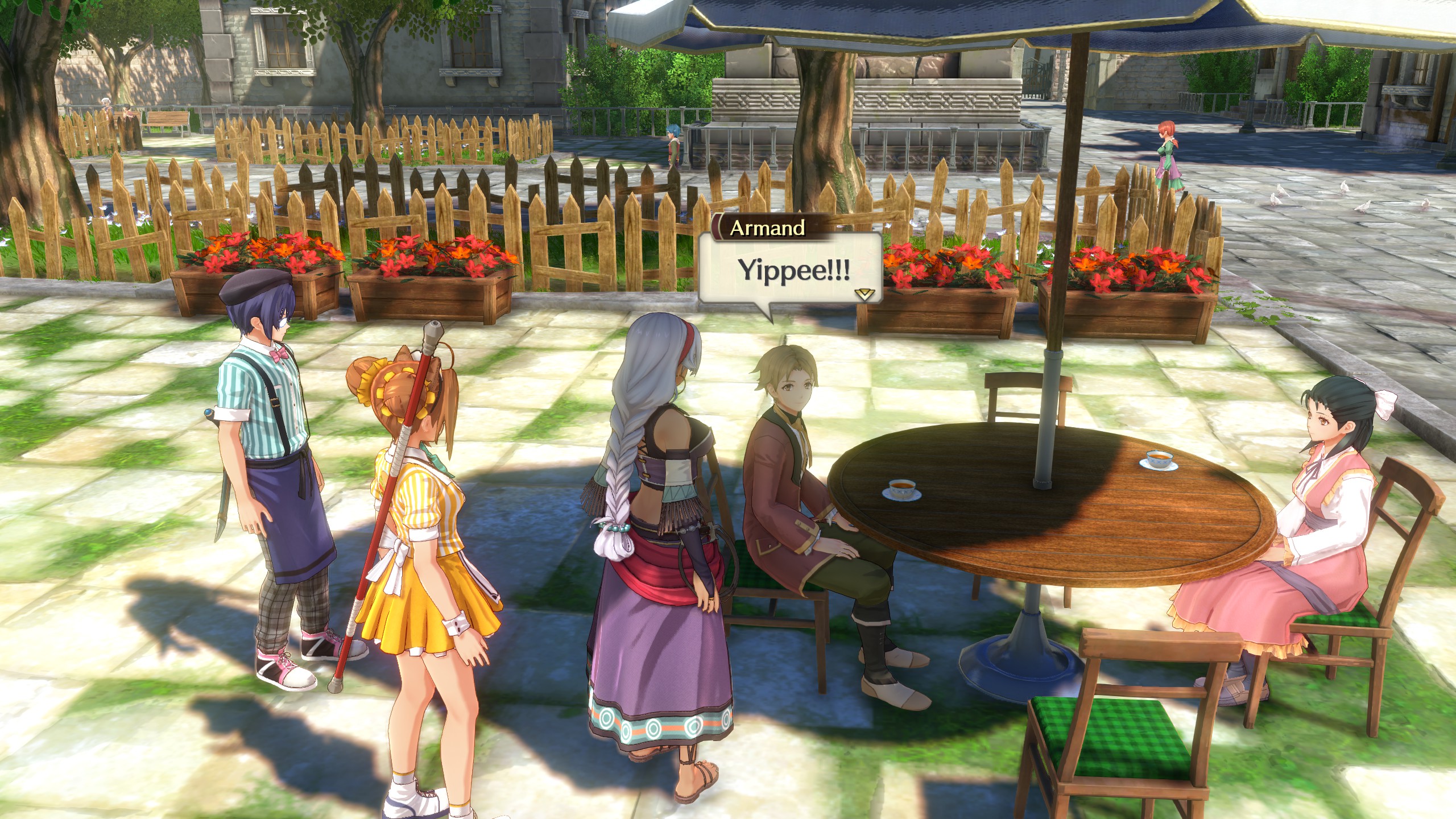
Folks, Falcom remade Trails in the Sky, and I played it. Now I wanna talk about how it compares to the original. I'm not going to discuss whether or not I feel a remake was "justified" or not, because I think that is a deeply boring conversation that has already been beaten into the ground. The original is 21 years old at this point, and any 21 year old IP owned by an active company in 2025 is going to get a remake. They remade To Heart for God's sake. I'd bet money that whoever owns the rights to Custer's Revenge has pitched a woke and/or edgy reboot of it to Atari at some point. Of course Trails in the Sky was going to get a remake. To that end, I'm also not going to go very deeply into if you should play this remake or the original as your first experience. If you're reading this, chances are you already know which one you want to play. If you don't: I am going to tell you to play the original. I'm a retro vtuber. I play like, two new video games a year. Of course I am going to tell you to play the original with an easily available PC port. Fortunately, though, the story remains completely untouched in the remake, so you'll only be missing out on immense charm and tighter game design if you go that route.
Rather than a formal review, this is more of a conversation about the major changes the remake implements on top of the original game and how I feel they weaken the overall experience. I'll try to keep spoilers to a minimum, so you should be able to read this as long as you don't want to go in completely blind. Now, before diving into my opinions, I want to make it clear that I ended up enjoying this game significantly more than I expected. As a fan of the original, I will sound like a fuddy-duddy discussing some of the changes, but my fudding and dudding comes from a place of love. Also keep in mind that I haven't played any of the new games past Cold Steel 4, so some of the elements I discuss were introduced in those games. I will discuss them as New(TM) features, since I haven't experienced them before, and they were not present in the original game. Let's begin!
Ys in MY Trails Game??? (Combat)
By far my biggest concern with the remake was the inclusion of the real-time combat system, first introduced in the Trails Through Daybreak subseries. I was scared that this was a sign of Falcom going the way of Square Enix and Final Fantasy, slowly abandoning turn-based combat in favor of flashier action-based battles, Ysifying the series. Having finally tried it, this doesn't seem to be the case, at least for now. For the first 10 hours or so, I did my best to totally ignore the new system, instead popping directly into "tactical mode" with a button press with every encounter. But each battle felt a bit too long, compounded by playing on hard mode. Previous games in the series heavily encouraged preemptive strikes to get an advantage in battle, but the "go to the fun combat mode" button provides no way of accomplishing that. And so, I begrudgingly began to experiment with the real-time system.
Partially due to my stubbornness and partially my inability to read, it took me far too long to understand that the game wants you to initiate combat with some stick-swingin' action and only enter tactical mode upon stunning the enemy. Doing so will put you into a heavily advantaged state in turn-based combat. The Steam page claims the game gives you "the choice of traditional turn-based combat or all-new, real-time action combat, to suit your style of adventure," but this really isn't true at all. It's actually very specific about your adventure styling. New players expecting to be able to play the entire game without using turn-based combat will be quickly disappointed, because the hybrid approach is the only thing the designers want you to do. Trying to complete battles without entering tactical mode is rather tiresome, as each controllable character only has a handful of moves available. There are no big combos here, just the same loop of attack, dodge, and craft attack. Typically, one or two executions of this loop will stun a normal enemy. Continuing with real-time attacks to finish off the enemy after that is tedious and repetitive. Furthermore, bosses can only be taken on in turn-based mode, so you're stuck with enemies that have one or two easy to dodge attack patterns in real-time mode.
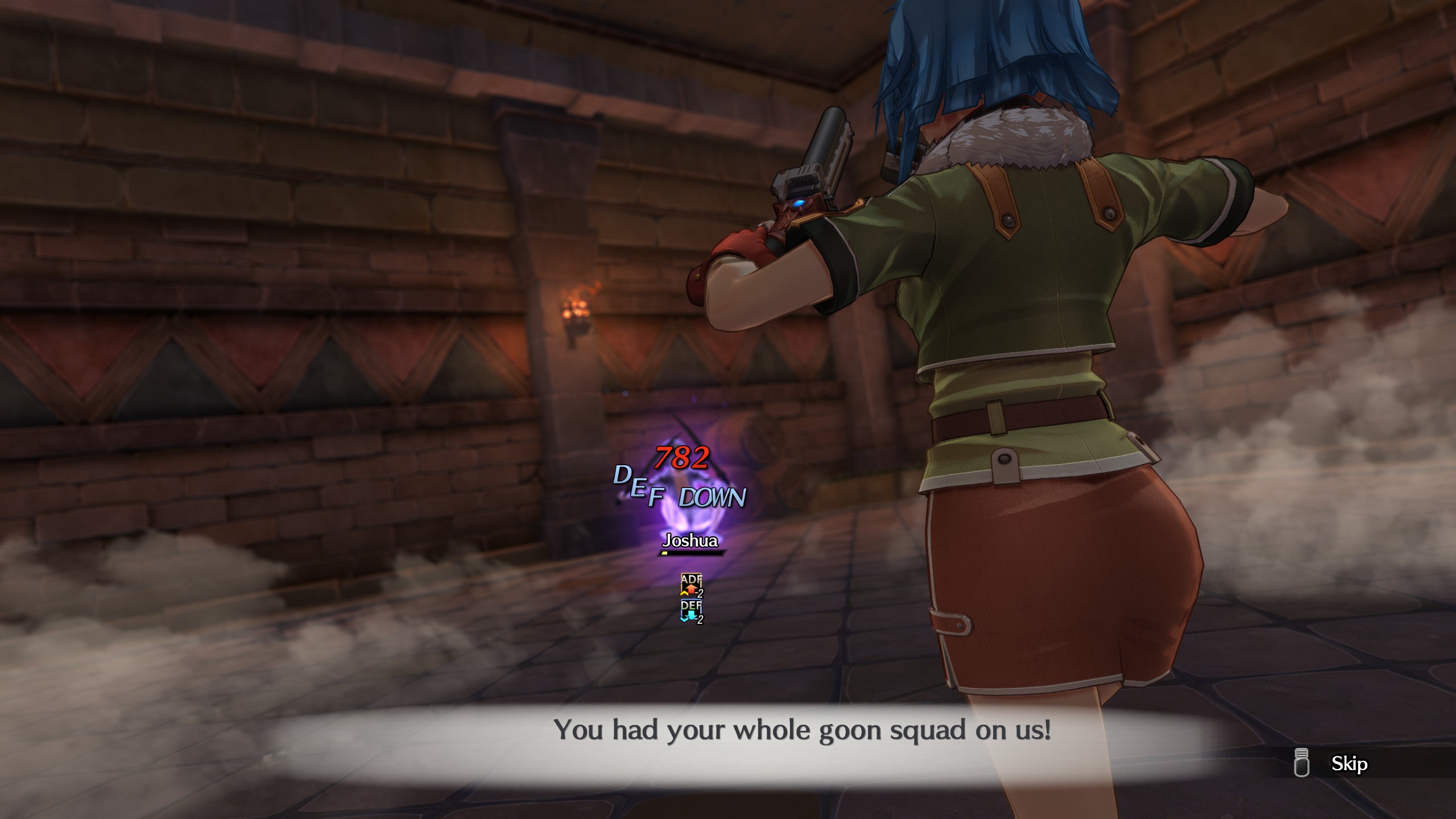
The hybrid combat system takes some getting used to. Picture unrelated.
Once I started obliging Falcom by following the intended flow, the game became more enjoyable. In fact, it's almost too enjoyable. Before you stone this grouchy old woman to death, hear me out. I think the gameplay designers at Falcom are suffering from a severe dopamine addiction, because each and every piece of combat is put together to maximize its release. This has been an ongoing process in the series, with the original Trails in the Sky series having a fairly simple but solid set of mechanics and each successive entry after layering on additional pieces to counter any possibility of battle becoming boring. I think they've finally gone a step too far, teetering precariously between flow state and flowcharts. Let's walk through a typical encounter, starting with real-time combat: Attack until the enemy counters. Perfect dodge, emanate a green aura and slightly slow time. Craft attack, flash blue, the enemy's stunned. Activate tactical mode. Screen flash, do your follow-up attack. The meter rises. The enemy is still stunned, trigger follow-up attacks two more times. Now you can do a combo attack. But wait, you unlocked all-out attacks, so flash some kanji on the screen and build that meter up two more times. Now, all-out attack. You win!
It's fun while it's happening, but if you dare peel back the curtain, you start to realize that most encounters require no strategizing whatsoever. Previous games attempted to counter this by letting enemies inflict strong status effects that can instantly turn the tide of battle. But the more recent additions to the system nullify those as well. Party members will automatically heal and even resurrect each other as their bond experience level grows. The all-out attacks remove all status effects; just in case you can't trigger one of those, a new "overdrive" state allows you to instantly boost stats and remove all debuffs. And this is all assuming you haven't already equipped accessories granting 100% immunity to these effects. Higher difficulty modes are available, but this series has always had a problem of harder modes shifting from being challenging to pointlessly time consuming over the course of the game, slapping on absurd amounts of HP to compensate for how ungodly powerful the party's become. Of course, I'm not going to purposefully weaken my characters to balance the game either, so battle just feels too easy in the latter half of the game.
One final note about the real-time system. While it works pretty well once you get the hang of it, I'm not sure it's really any more engaging than simply gaining battle advantage by sneaking up on the enemy and performing a back attack. Maybe the problem is that I'm no action game aficionado, but the short action loop in each encounter feels kind of pointless when a much easier alternative has been available in the past. Regardless, halfway through the game, you're given a field ability that all but guarantees an instant stun on every enemy and is almost always ready for use. Once I unlocked that, I simply went back to ignoring the new system. Falcom has some real commitment issues with this game.
Number Go Up! (Upgrades)

Another dopamine delivery mechanism carried over from recent games in the series is the ability to upgrade just about every piece of equipment using items called U-Material. There are a few unfortunate side effects of this. Most obviously, it feels like at least a third of chests in the game contain U-Material, even though it can also be obtained through defeating enemies and taking out destructible elements in the field. This results in treasure chests feeling less and less special as you amass huge amounts of U-Material. Furthermore, about a third of the way through the game, you obtain some particularly powerful accessories that grant 75% immunity to most status effects or provide absurd levels of craft point recovery. These accessories already felt a little overpowered in the original, but the remake provides the ability to upgrade them to give perks that shouldn't be available until the final couple of dungeons. As mentioned before, status effects are used as a bit of an equalizer in combat, so getting 100% immunity early on is kind of ludacris.
If a third of chests are U-Material, a third still are "droplets," consumable items that provide permanent stat upgrades to the character of your choice. These are also rewarded for meeting in-game milestones and achievements, such as killing a certain number of enemies or performing upgrades. Apart from the droplets, cooking dishes for the first time now provides additional stat boosts to the entire party. As you'd imagine, the steady flow of powerups starts to compound dramatically later in the game, reducing the difficulty even further. These are balanced to a certain extent, but the necessity to make the game clearable without engaging with optional content means Joshua and Estelle really skew towards godhood in a completionist playthrough. The Trails games have never been particularly difficult in the late game, but like the combat, I can't help but feel they've gone a few steps too far in enabling monstrous stat growth.
Carnelia Desire (Quests and Secrets)
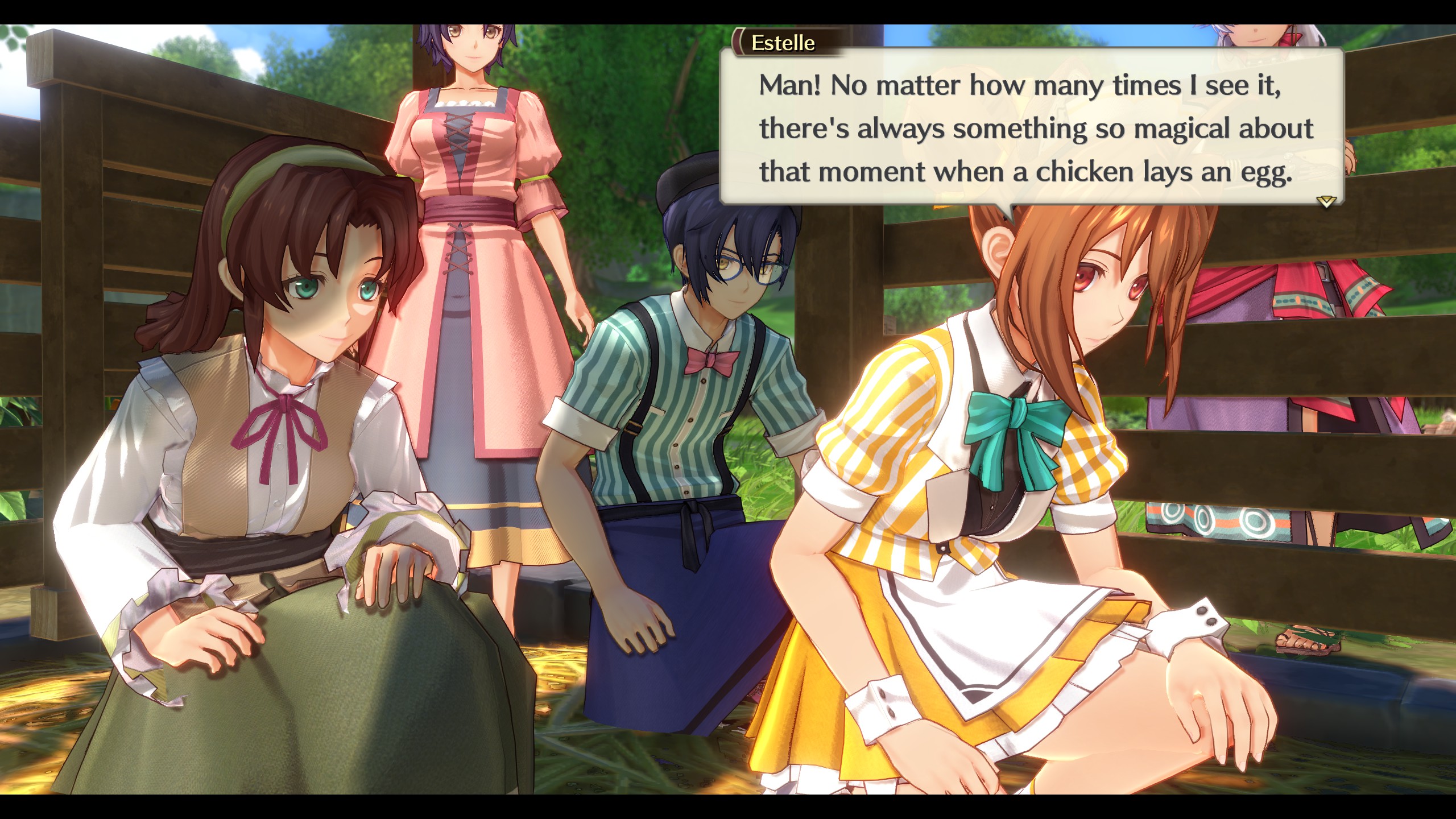
Trails in the Sky was released in 2004, a time when JRPGs were still allowed to have easily missable, obscurely placed sidequests. The series has lightened up on this over the years, marking available quests and limited time events on the map. I don't particularly mind this change, because it reduces the necessity to play with a guide for a completionist run. Strangely, though, the designers somehow felt this wasn't generous enough. Each game in the Trails series has some sort of "ranking" system that provides rewards for completing sidequests and making the correct choices in a handful of scenarios. In the ones I've played, the journey to the highest rank is a bit of a nailbiter, as missing a single quest point means being unable to achieve it. This was kind of harsh, so marking all the quests on the map felt like a fair concession. But in the Sky remake, I reached the top bracer rank several hours before the end of the game. I'd wager they've balanced it out so that the top rank can be reached even if the player chooses incorrectly in every single bonus point dialogue option. If that's the case, why even keep them? Is someone at Falcom overcome by FOMO? If the rewards for the most dedicated players are easier to obtain, they just don't feel as satisfying to receive.
Map marking has had a negative effect on the overall quality of the sidequests and engagement with the game world as well. A number of sidequests involve using dialogue clues or riddles to figure out the location of a missing item, but now every single quest objective is signposted with a bright green exclamation point on the map. Sometimes the marker dissolves away into highlighted search radius once it's reached, but determining that search location was the supposed to be the challenge of the quest. Running straight to quest markers made me realize partway through the game that I was missing out on a significant amount of NPC dialogue as well. This is a sad reality for a Trails game. The series prides itself on each and every named NPC going through some sort of novel experience or character arc, and the only way to pick up on them is with frequent interaction.
Speaking of novels, the path to Joshua and Estelle's ultimate weapons is now significantly easier. Trails fans live in fear of each game's unmarked book collecting quest, where successive chapters of a novel are obtained by speaking to NPCs in the most obtuse of locations in extremely narrow windows of time. If the entire story is collected, they can be traded up to a character's best weapons. I think this system was initially implemented as a way of getting the player to engage with all of the aforementioned NPCs, but the availability of some of the chapters could be extremely cruel. As you may have already guessed, the remake marks the location of these books on the map, making them much simpler to track down. I don't think this is necessarily a bad change, in isolation. The problem is, missed pieces of the novel can also be purchased at shops in each town. This should have been an either/or proposition, but instead they included both methods of making the books easier to obtain. I know these are all nitpicks, but they really add up in my mind.
One worry I had with this remake that turned out to be unfounded was that they would add a ton of unnecessary sidequests to pad out the game's already lengthy runtime. Cold Steel 3 was 90 hours and Cold Steel 4 was a 110, so I feared the worst here. Fortunately, there are maybe 5 total new sidequests, which seem to mostly be tasked with giving some of the characters a little extra screentime and setting up some later character relationships. A quest with Tita in chapter 3 is pretty cute, while the other new ones feel unnecessary but unoffensive. Probably due to snappier movement and combat, my total playtime of the remake came in under the original: 50 hours for the remake, 54 for the original.
The Joshuas look like Joshuas (Graphics and Cosmetics)
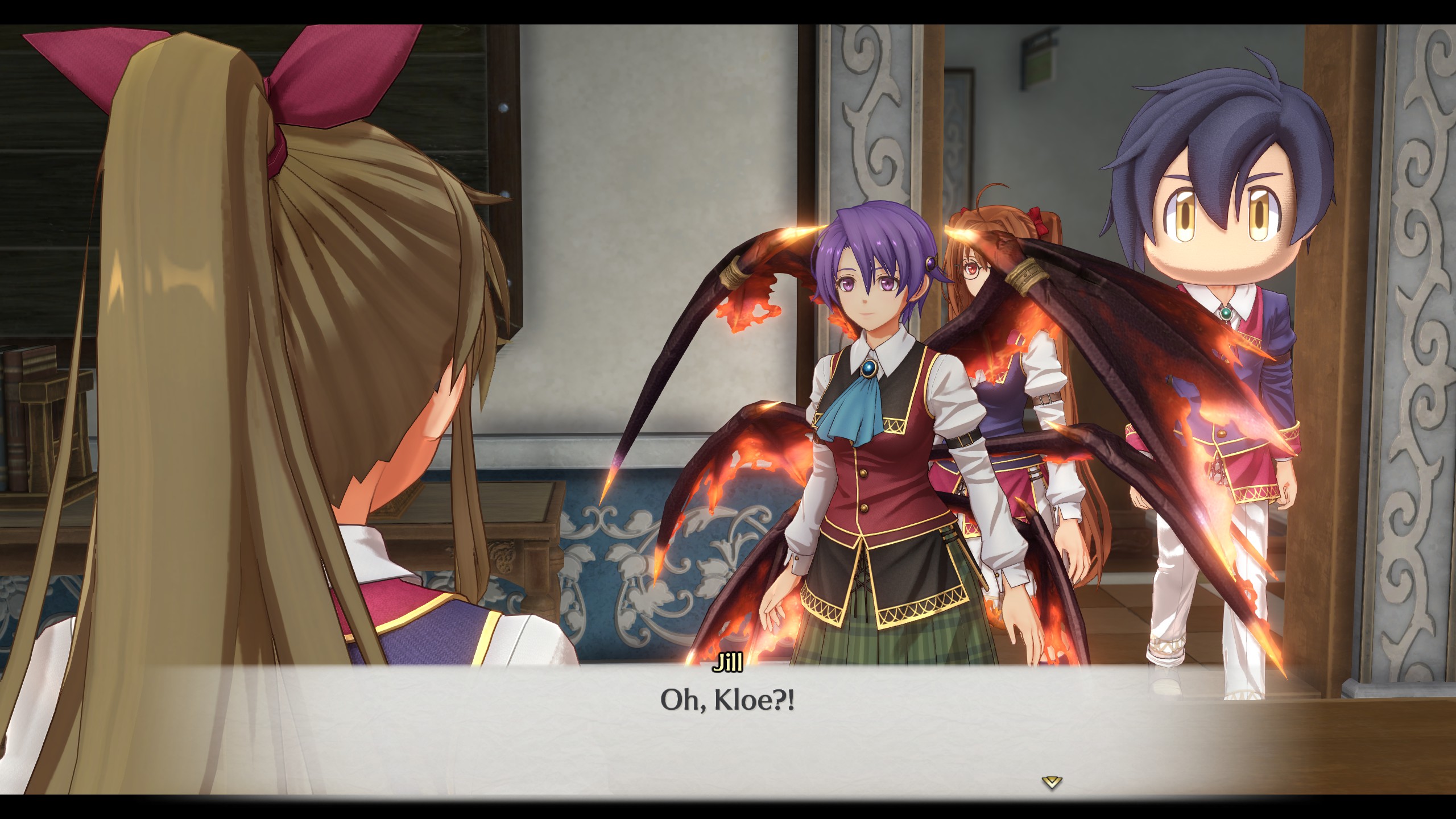
Joshua is letting all that popularity get to his head.
Graphically, the Trails in the Sky remake is the best looking in the series since it fully transitioned to 3D graphics with the first Cold Steel game. The characters can still be kind of same-facey, but I think Falcom is finally getting to a point where the limited budget isn't distractingly obvious. The character animations are pretty solid, both when running around the field and when in turn-based combat. Obviously, I prefer the charming Little Fellas running around the isometric world of the original, but a remake was never going to have those. I'm going to be brave and not talk about it in more detail than that. I did get sad when I saw them sprinting in the bottom corner of the remakes loading screens, though. Exploring the locations of Liberl in full 3D is pretty satisfying at times, particularly in some of the larger buildings or dungeons. The limited budget means most aren't as detailed or varied as one would hope, but it is what it is. Generally speaking, a lot of care went into the game's most important cutscenes, including a particularly long one in the middle of the game. I won't spoil it but, it is one of the only times I understand Joshua's appeal.
One fantastic benefit of 3D character models is the ability to change outfits and add cosmetics. Some of these are available for free either in-game or as DLC, while others are part of a "Season Pass" of DLC, because words don't need to mean anything anymore. The DLC is a bit pricey, but I'm a total sucker for character customization and bought most of the cosmetic ones. The costume options range from tame (palette swaps) to absolutely absurd (giant mascot outfits with separately removable head and body). I thoroughly enjoyed dressing Estelle and Kloe up while making Joshua and Agate look as shitty as possible. You can put Estelle in a bikini if you care about that. You're totally missing out on Estelle's actual appeal if you do that, but you do you buddy. You do you. My only complaint is that Joshua's better cutscene outfits aren't available. This is because God hates me. Apart from the outfits, the accessories are sort of bland or comically distracting with no in-between.
It's MyBose!!!!! (Voices, Script, and Sound)
One surprising aspect of the remake is a brand new voice cast and new English translation. I assume there must have been some business reasons behind it, because it feels like an unnecessary expense for a game otherwise made on a budget. That said, the new Japanese cast is fantastic. Everyone seems to fit their roles quite well, especially Estelle. Distracting for me personally is Hina Youmiya, known for voicing Tomori in MyGO!!!!, taking on the role of Kloe. She does a very good job, but boy does she sound like Tomori sometimes. Trails in the Sky didn't feature Japanese voice acting until the PS Vita rerelease, and the PC version does not include these voices (though they can be modded in easily). As a result, I don't have any thoughts on the old cast versus the new one, but my friend who has heard both seems generally positive about the remake's. I don't have much to say about the English dub here either. I didn't particularly like what I heard of Estelle's voice, so I kept it on Japanese for the entirety of the game.
The new English script translation seems to have been done by a company called Acttil, which has dabbled in publishing but mostly worked on localizations for Gust games prior to 2020. From what I can tell, they've barely done anything since then. Their own website doesn't list any news past 2020. I'm curious if Gungho purchased them for establishing an in-house localization team or something. Regardless, the script seems competent enough. I'm not familiar enough with the original script or fluent enough in Japanese to judge their work here, but it reads well apart from a couple of typos.
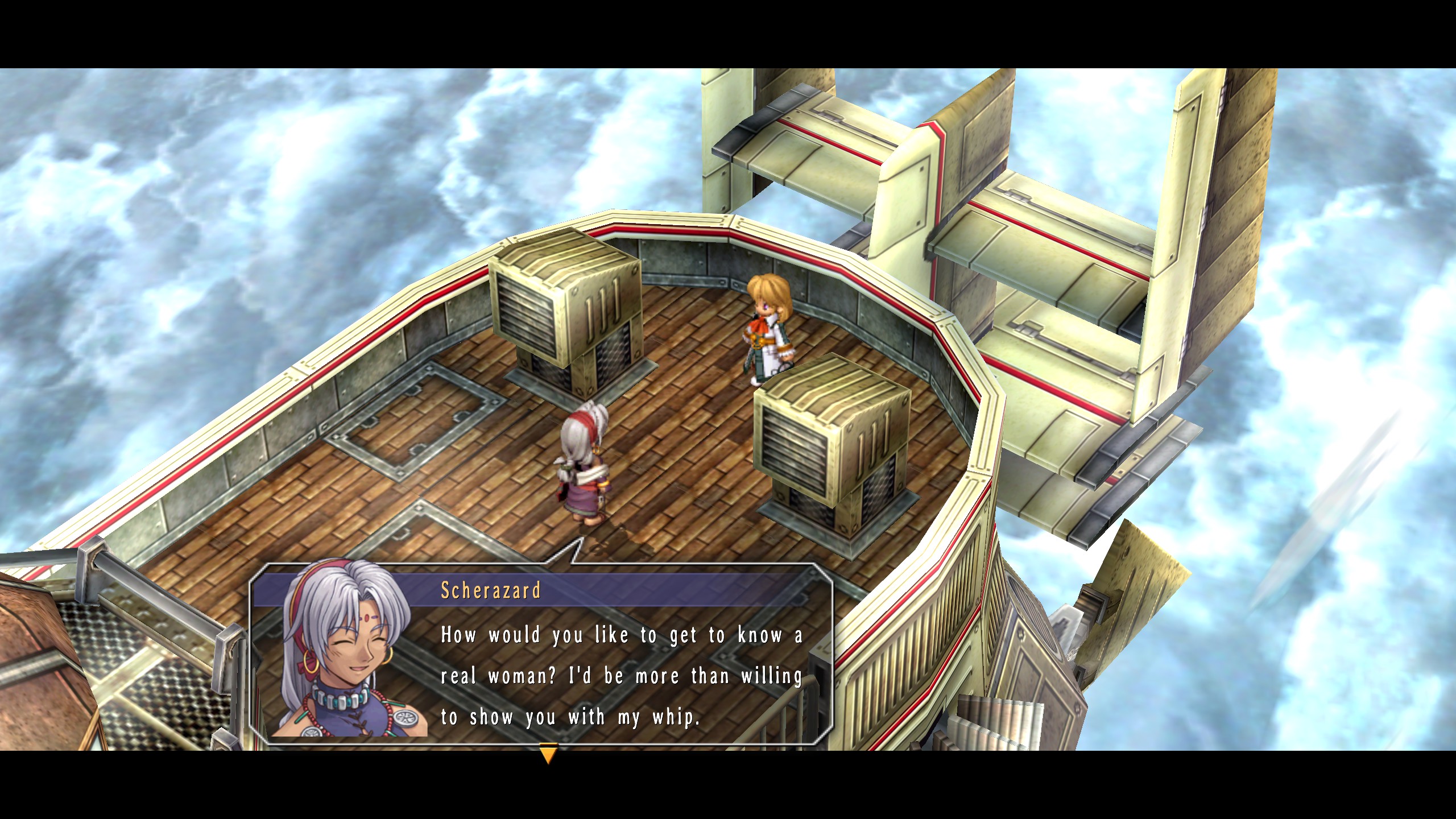
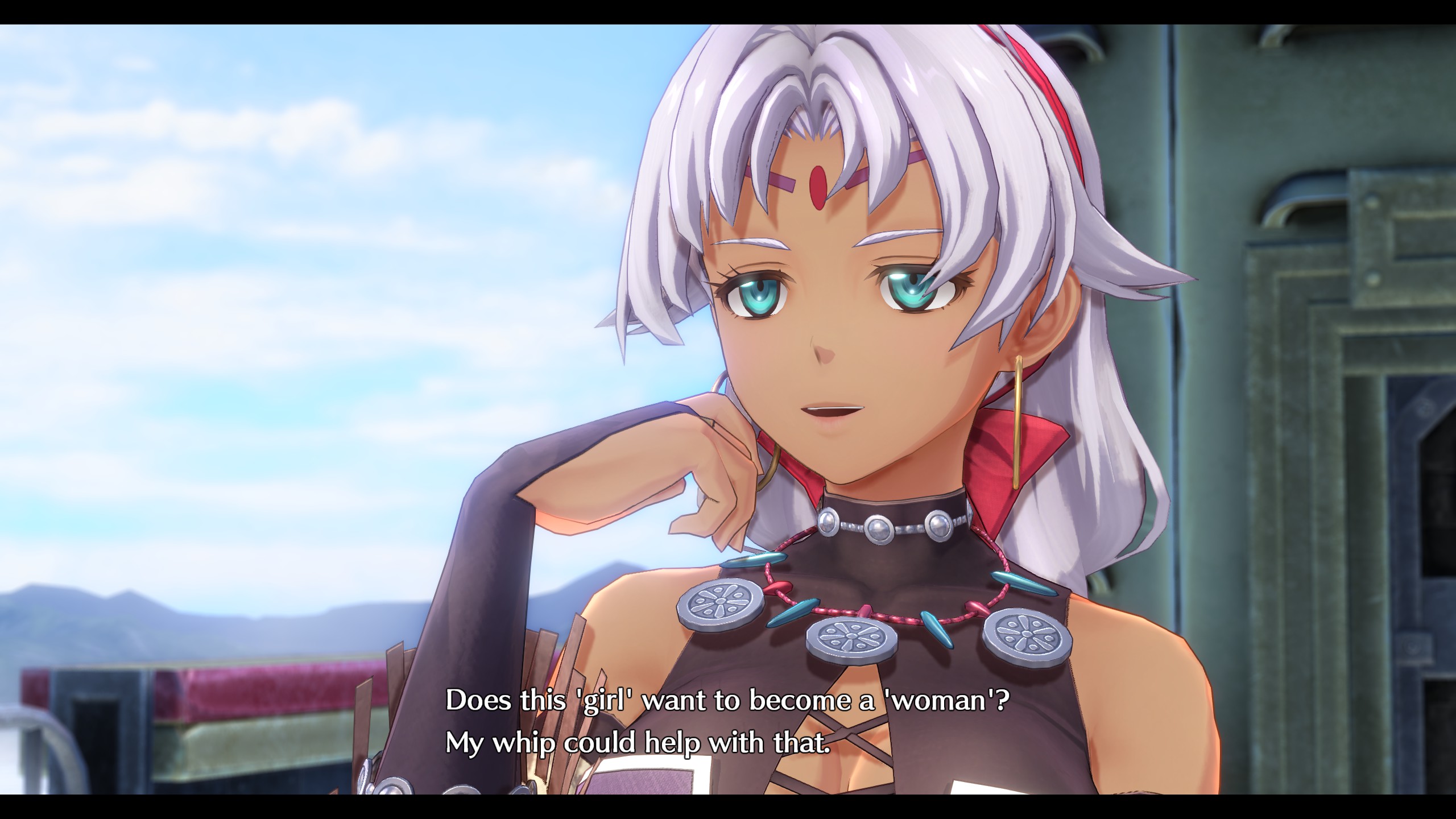
One example of line differences between the original and remake.
Apparently the XSEED localization of the original has gained a bad reputation in recent years for being too liberal with the script, but the state of Online means it's impossible to determine if there are actual problems or if Gamers are just mad about some insane, unfounded conception of censorship. All I can say for sure is that, based on my screenshots, just about every line varies from the original. Gungho has shown some willingness to address issues fans of the series had with the translation, mostly relating to terminology changes that made the script inconsistent with the rest of the series' localization (for example, Scherazard was referred to as "Silver Flash" in some marketing, whereas she has always been nicknamed "Silver Streak" in other localizations). The one I noticed is that mechanical creatures are now called "golems" instead of "archaisms," a term that was established in XSEED's translations, but there are apparently others. This is definitely frustrating from a consistency standpoint, but I don't consider it the end of the world. The gamer blood within me does not boil as strongly as others, I'm afraid.

Worry not my gamer warriors. Woke has NOT come to Trails in the Sky Remake!!!
Jesus Christ It's Finally The End Why Did You Type So Much About This Video Game You Absolute Asshole
I'll admit, this post mostly exists to vent some of my own frustrations with the remake. I do think that this is a pretty solid remake, all things considered. Most of my issues lie with the direction Falcom is taking recent games in the series, but the story is entirely unchanged, which is the most important part to me. Despite my many nitpicks, this has restored some of my faith in Falcom's ability to make video games after Cold Steel 4 shattered my enthusiasm for the Trails series. They showed the original a lot of love here, which gives me hope that they haven't gone entirely insane. I will not forgive them for Cold Steel 4, though. I will never forgive them for Cold Steel 4.